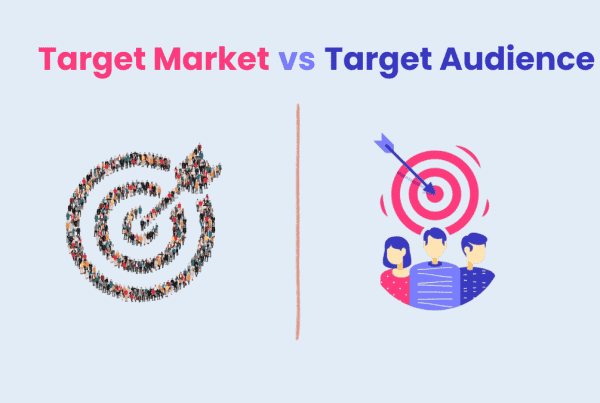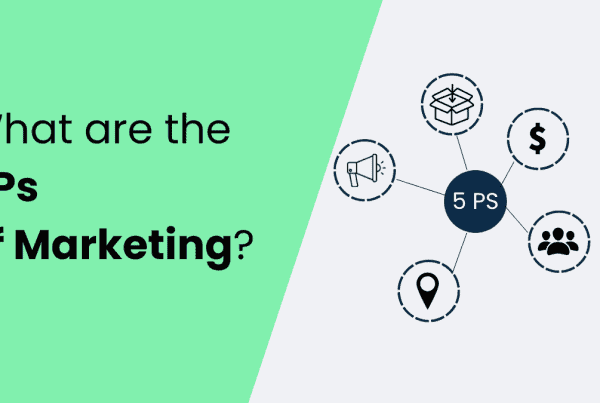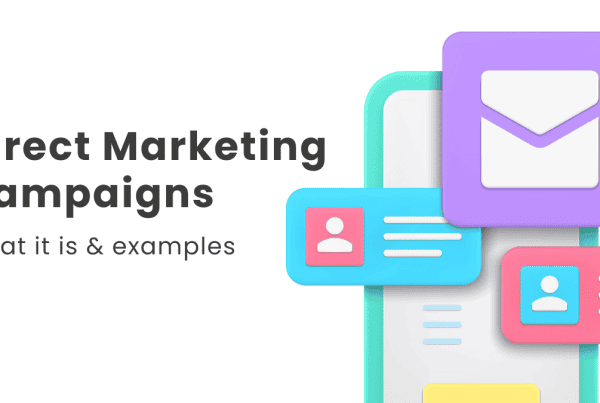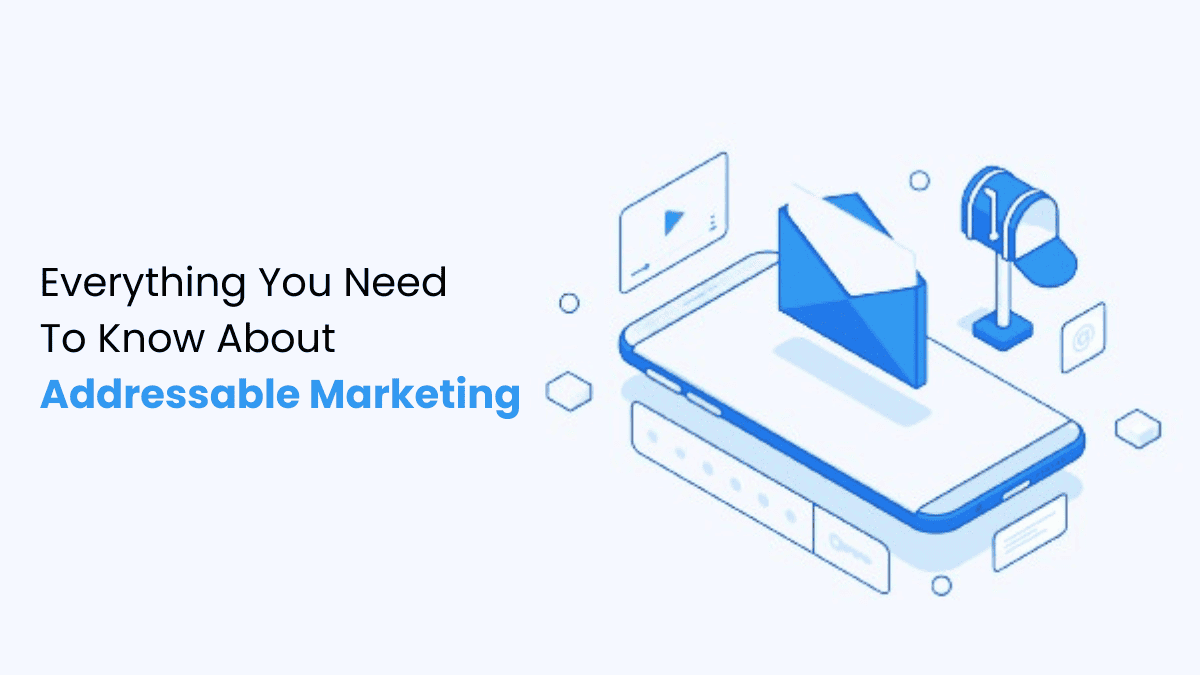
People don’t care about store ads as much as they used to, so companies must work hard to get their attention. More than broad demographics, geographic data is needed in normal addressable marketing to connect with and reach the right people.
Now that there is Addressable marketing, businesses can send targeted messages to people or groups. This helps their ads reach more people, increase the number of people who connect with them, and boost their ROI.
What’s good about addressable marketing? What implications does this hold for the future? In this article, we will discuss everything about it.
What is Addressable Marketing?
Addressable marketing is a targeted advertising strategy that focuses on delivering personalized messages or advertisements to specific individuals or groups based on various data points such as demographics, interests, online behavior, or past interactions. It allows advertisers to tailor their marketing efforts to reach the most relevant audience segments, thereby maximizing the effectiveness of their campaigns and minimizing wasted ad spend.
Running a business that sends personalized messages to specific people or groups of customers is possible by using advanced targeting techniques and data-driven insights. This kind of marketing is also known as specific (niche) marketing or advertising. Addressable marketing usually reaches a lot of people.
Let’s say a sports apparel company wants to promote its new line of running shoes. Through addressable marketing, the company can use data to identify individuals who have previously shown interest in running or related sports activities. These could be people who have visited the company’s website and browsed through running shoe collections, subscribed to running magazines, or participated in local running events.
Using this data, the company can create personalized ads that highlight the features and benefits of its running shoes and target them specifically to this audience segment. These ads may appear on various platforms such as social media, websites, or mobile apps that the target audience frequently uses.
By leveraging addressable marketing, the sports apparel company can increase the likelihood of reaching potential customers who are genuinely interested in their products, leading to higher engagement rates, conversion rates, and ultimately, sales.
One thing you should remember is that; a product or service is useless if nobody needs it. Seth Godin said, “Don’t find customers for your product. Find products for your customers”. On the other hand, addressable marketing lets you reach and connect with very specific groups based on what they look like, how they act, and what they like.
Addressable marketing focuses on customization and personalizing experiences for each individual. Businesses may learn about their consumers’ habits, preferences, and intentions by using data analytics, AI, and machine learning. Learning about customers’ traits helps in the framing of highly targeted advertisements that produce concrete effects.
How Does Addressable Marketing Work?
Targeted messages and data-driven observations are mixed in addressable marketing. You have to go through many steps to send specific texts to groups of people. To better understand the main parts and steps of marketing, click this link.
Mediatool says that It’s a fact that “Addressable marketing targets customer behaviors and interests using data to deliver adverts to specified audiences”.
Data Collection
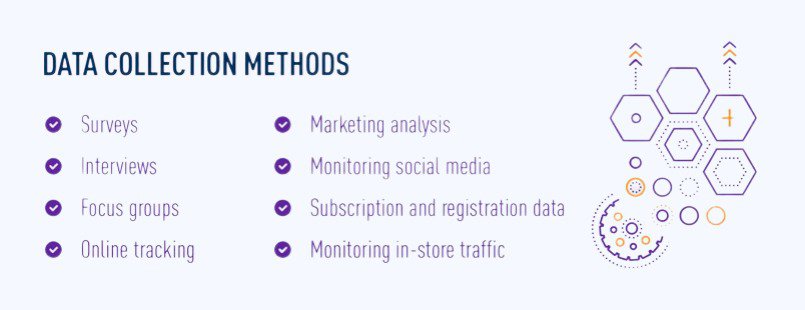
For addressable advertising to work, you need to know things about people, like what they like and how they act. For this step, you need data from many different places, such as conversations with customers, visits to your website, conversations with other people on social media, records of sales, and data from outside sources. By getting information from many different exchanges, businesses can learn much about their customers’ physical and mental traits and what they like to look at and buy.
Data Integration and Analysis
Once all the data is gathered, it is sent to a main computer/cloud server. Advanced analytics tools and methods are used to go through it there. The main purpose of this research is to find useful data, underlying patterns, and ways to divide the audience into various groups based on the behaviors or traits they share. With machine learning and prediction models, marketers can find trends that aren’t obvious and get a better idea of what customers will do in the future.
Bringing people together

With all this information, marketers can divide the public into small groups or segments they want to reach. By putting people into groups, firms can ensure that their ads align with what each group wants, needs, and does. Separate people into groups based on age, gender, income, views, lifestyle, hobbies, level of interest, buying intent, and where they are in the buying cycle. Marketers can make messages and materials more useful to each group of customers when they split their customers into groups.
Targeted Messaging and Content Personalization
Marketers can make messages and materials more useful to different groups of people when they know more about them. For each group, this means changing ads, emails, social media posts, website experiences, and product ideas based on what they like and don’t like. If you want them to connect with you, this shows that you care about them and know what they need. Businesses can get people to pay attention and do what they want by giving each group information specific to their needs.
Choice of Channels and Optimization
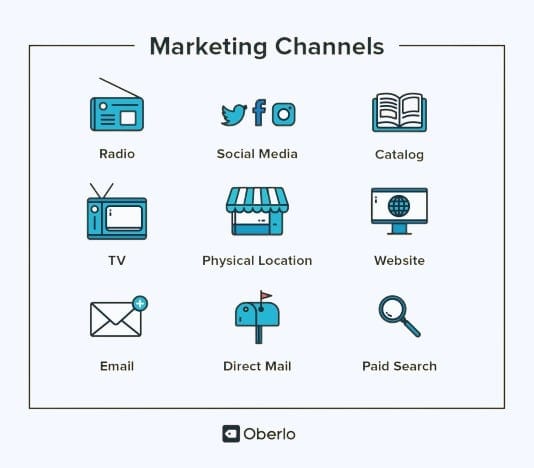
Businesses can use addressable marketing to reach their ideal customer profile (ICP) through various methods and ways to contact them. There are many ways for marketers to get in touch with people. It includes email, mobile apps, and devices that can connect to the web, as well as digital sites and social networks. It would help if you choose the right channels for each group to reach the most people and get them excited. When marketers look at how people connect with, use, and like different channels, they can ensure that their mix of channels (i.e. marketing mix) works best for everyone. It would help if you also kept making your plans to send messages and other things better based on what people say and real-time facts about how they’re working.
Campaign Execution and Measurement
When a business has an addressable marketing plan, it can run ads through certain platforms and touchpoints. Marketers must closely monitor key performance indicators (KPIs), results, and other ways to measure success to see how well their work is going. With this method, marketers can change their plans, find the best targeting factors, and get better at what they do over time. When businesses do focused marketing, one way to improve over time is to track and study their progress. Tracking the progress of the marketing plan can help improve the return on investment (ROI).
Test and Iterate
You can always switch up your plans with targeted marketing to see what works best. It would help if you looked at at least two plans to find the best message, target group, or way to reach people. A company will do better and get better results as it changes its marketing based on test findings.
Unique trip for each customer
Ensure the customer journey is as easy and fun as possible at every touch point. A person has to go through a lot of steps before they can buy something. At all these steps, you need to ensure that your message and content are still useful. It will help your business move possible customers through the sales funnel more quickly. Change how you talk to people based on what they like and how they act to get them to buy.
Integration with CRM Systems
Tools for customer relationship management (CRM) and targeted marketing (AM) work well together because they make it simple to share data and choose better customers. By compiling CRM data with other customer data sources, a company can learn more about what each customer likes and doesn’t like. This helps ads get to the right people and work better.
Always learn new things and get better
Marketers and people who use the same marketing strategies repeatedly need to keep learning and improving. There are always changes in the market and what people want. If a business wants to change its plans, it should always look at how its efforts worked and hear what people say about them. Addressable marketing is a strategy where marketers have to keep improving their strategies with time and trends.
Addressable Marketing Benefits
A business can get better results from its marketing with addressable marketing. For example, it can be more personal and go after certain people. Let’s take a closer look at these benefits:
Precision Targeting

With this kind of marketing, companies can send personalized messages to very small groups of people. Marketers can find and speak to specific people by segmenting and analyzing data about what they like, how they act, and how likely they are to buy. This level of accuracy ensures that marketing texts get to the right people at the right time, increasing ROI.
Better personalization
It’s great to use targeted marketing because it lets you send each customer offers and materials that are just right for them. Companies that keep track of customer information can ensure each customer has a unique experience by discovering what they like and dislike about the brand and how they’ve dealt with it. When a brand does this, it makes people feel like it knows and cares about them better. This makes people like and trust your business more.
Improved Campaign Performance
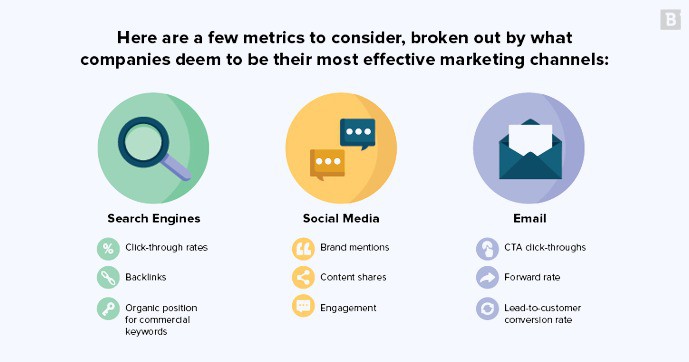
Marketing for a business will work better if it can see and follow its progress in real time. Marketing professionals learn about KPIs such as click-through rates, MQLs, and return on investment (ROI). They can change their plans if they need to. They can get more people to buy from them and get their money back faster if they keep an eye on and change their marketing.
Data-Driven Insights
People like to know what trends are going on and what they like. You can learn about them through target marketing. Companies can learn more about their ideal customers and how the market works by looking at different types of data, such as how customers connect with them, how often they check their websites, and how they act on social media. With these tips, businesses can choose the best plan to understand better and meet their customers’ changing needs and wants. Ideas based on data can also help businesses grow and improve. This will make the business run better as a whole and will guide marketing in the future.
Cross-Channel Integration
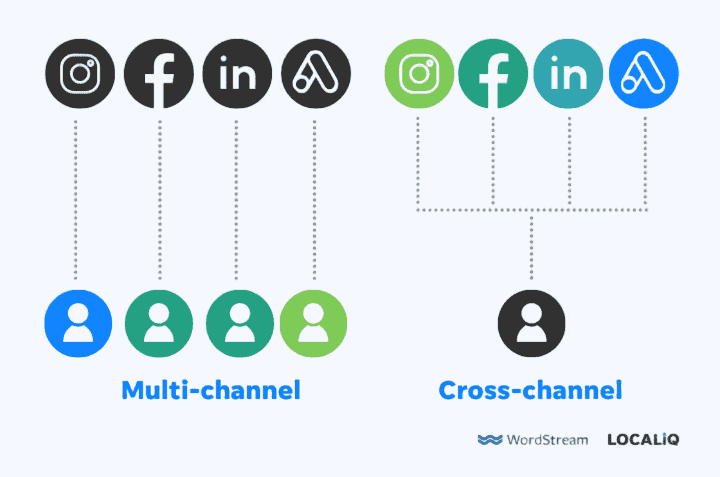
That way, companies can send the same message to everyone they want to reach. It’s easy to connect different ports and plugs this way. When a business sends out words, it can ensure that they align with its style and values. They might do this in chat rooms, texts, apps for phones, or even in real life. When all platforms work together, it makes people more interested in the business and ensures they see the same information everywhere.
Adaptability and Agility
Today’s fast-paced digital world makes it possible to react quickly to changes in the market and what customers want. Companies can quickly adapt to changes in the market, customer comments, and trends with real-time access to data and information.
Cost savings
A business should ensure its ads reach the right people to get the most out of its marketing spending. They can get more from their marketing if they save time and money on ads that don’t reach the right people. Companies can also eliminate tactics that need to be improved by checking how their current efforts are going. It helps their ads work better and saves them money.
Increased Customer Engagement
More relevant and personal advertisements will get people to pay attention and connect with them more. A company can send customers deals and information that will interest them and get them to act when they use focused marketing. A business can connect with its customers in deep ways that keep them interested and loyal. People can write individual letters, post ads on social media sites, and use websites to get in touch with each other in these ways.
Competitive Advantage
People have a big advantage in a market that is getting increasingly crowded when they use targeted marketing. Businesses can get new customers and stand out from others by giving the people they want to do business with events that are special to them. To stay ahead of the competition and on top of the market, a business must be able to quickly adapt to new customer needs and changes in the market.
Brand Trust and Reputation
You can earn the trust and respect of your target group by using targeted marketing to give them unique and useful experiences. People are more likely to trust a brand if you send them ads about things that interest them. The brand stays in business for a long time because people trust it. People may support a business and tell their friends about it if it does focus marketing well. This can help it reach and help even more people.
Conclusion
When targeted marketing came along, it changed the way businesses think about online ads in a big way. It helps us get ads in front of the right people, help them more, and make them work better. Businesses can send useful and interesting messages to the people they want to reach with cross-channel contact, smart data analytics, and technology.
In the end, this will lead to a better ROI and turnout. Addressable marketing will become an even more important way for businesses to stay ahead of the curve and connect with their audience in useful ways as the competition gets tougher and customer standards change. You can do many great things with addressable marketing to take your business to new heights in the digital world. It should be a big part of how you sell your business.

